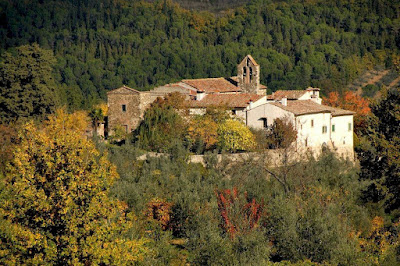Colle di Val d'Elsa is a town of 20,000 people located above the valley of the river Elsa on the route of the ancient Via Francigena, the mediaeval highway frequented by pilgrims and merchants travelling to Rome from Canterbury and elsewhere in northern Europe.
The main gate of Colle di Val d'Elsa
The Crystal Museum in Colle di Val d'Elsa opened in 2001 and is the only one of its kind in Italy. After being closed for some time, the Crystal Museum has recently re-opened.
The museum is located underground in the space once occupied by one of the furnaces of the 19 C Cristallerie e Vetrerie Schmidt and former the Boschi glass factory, a driving force of the economy of Colle di Valle d'Elsa from the 1920s and the early 1950s.
Crystal glass museum of Colle di Val d'Elsa
The exhibition starts with the display of some finds from the Middle Ages that can be attributed to the production of the 'gambassini', glassworks present in Colle di Val d'Elsa since at least 1331.
The different sections of the museum reconstruct the path taken by the local glass industry since 1820, the year the first furnace was installed. In that year the glassmaker Francesco Mathis opened a 'crystal' factory in Piano, near the church of Sant'Agostino. The business changed hands and Giovan Battista Schmidt took over production. The latter became known in Italy for the high quality and purity of the white glass and the attention paid to finishing the articles through grinding and carving techniques.
Colle di Val d'Elsa crystal
Lead crystal, discovered in 1963, marked a major turning point that characterised the entire second half of the 20 C, making Colle di Val d'Elsa known throughout the world as the 'City of Crystal'. Works of high-level craftsmanship, creations by famous designers as well as simple tableware have led the Colle di Val d'Elsa to produce up to 95% of Italian crystal and 15% of world crystal. The museum's itinerary, in the new layout of 2024, places the emphasis on those who made this development possible.
More about Colle di Val d'Elsa.
|
Author: Anna Maria Baldini







